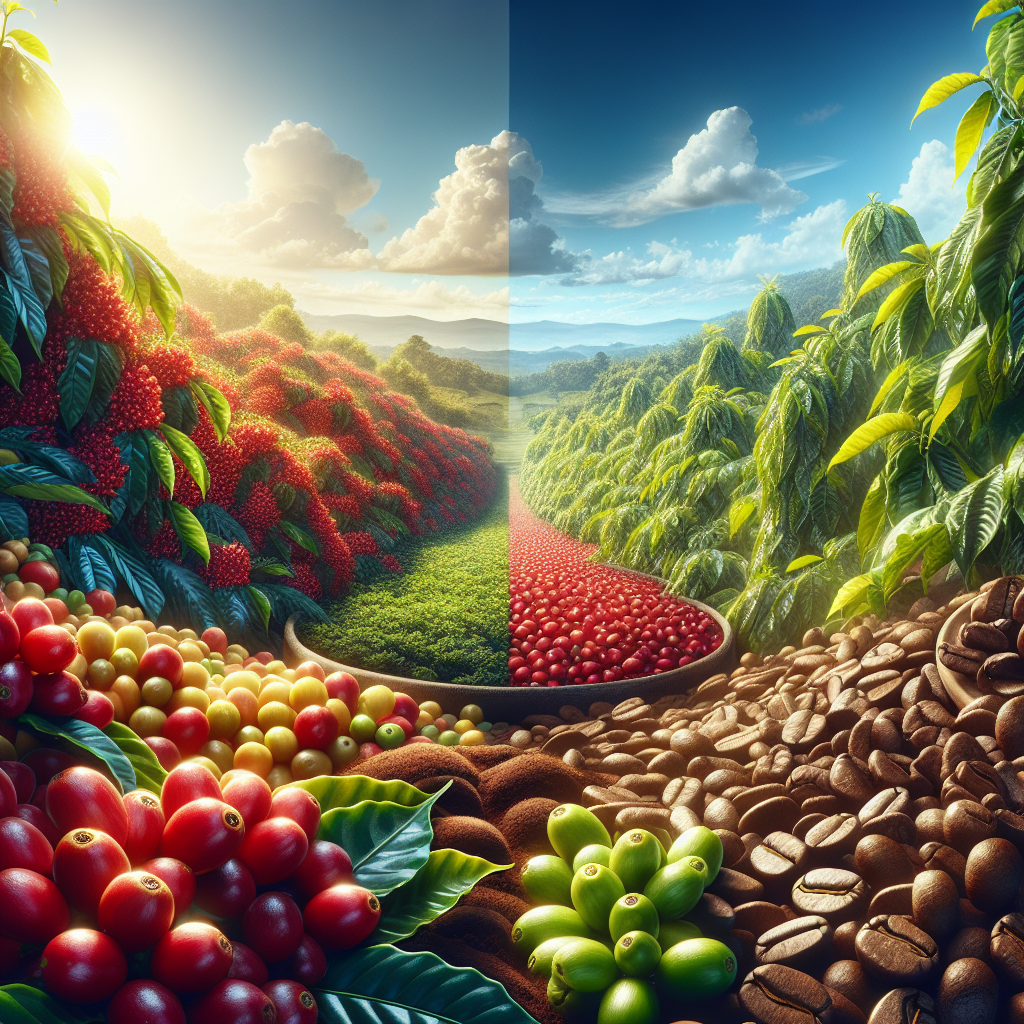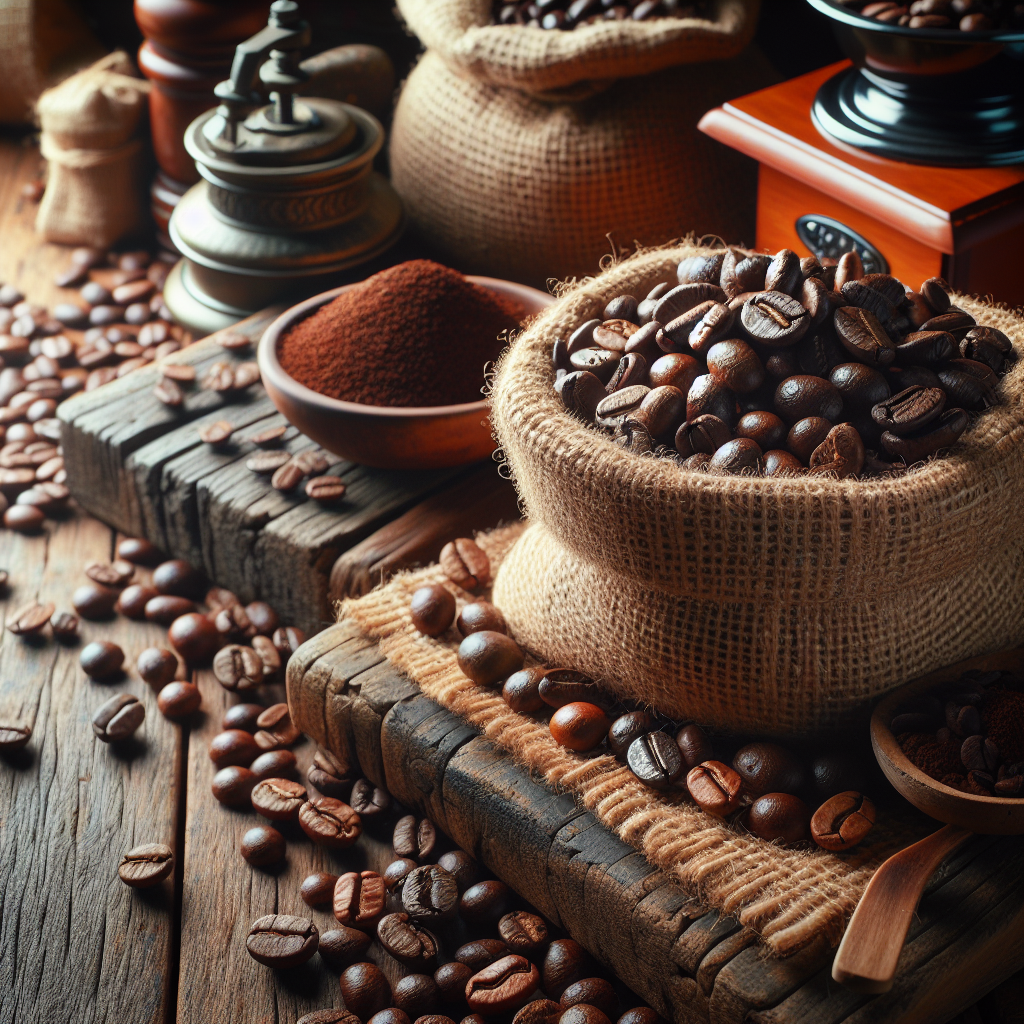“`html
What is the Difference Between Arabica and Robusta Coffee Beans?
Coffee enthusiasts and casual drinkers alike often wonder about the differences between the two most common coffee bean types: Arabica and Robusta. To give you a clear understanding, we’ve broken down this topic into several key aspects including bean shape, flavor profile, caffeine content, and more.
Comparison of Arabica and Robusta Coffee Beans
1. Shape and Size of Coffee Beans
| Attribute | Arabica | Robusta |
|---|---|---|
| Shape | Oval and elongated | Round and smaller |
| Size | Larger than Robusta | Typically smaller |
| Uniformity | Less uniform | More uniform in shape |
| Impact on Consumption | Preferred for size | Compact and robust |
Now, let’s dive deeply into what makes these beans distinct.
Shape and Size of Coffee Beans
The shape and size of coffee beans are the first noticeable differences between Arabica and Robusta. Arabica beans are oval and elongated, typically larger than their Robusta counterparts. The oval shape of Arabica beans is attributed to the shorter Arabica plants that produce these unique beans. On the other hand, Robusta beans are rounder, smaller, and more uniform in shape, making them easily recognizable.
When it comes to consumption, many coffee enthusiasts prefer Arabica beans for their larger size, which often translates to a richer and more nuanced cup of coffee. However, the compact and robust nature of Robusta beans also has its own set of advantages, particularly in terms of resilience and flavor concentration.
Flavor Profile Differences
The flavor profile is another critical factor distinguishing Arabica from Robusta. Arabica beans boast a smoother, sweeter taste with delicate fruity and zesty notes. Additionally, Arabica coffee is generally more aromatic, making it the preferred choice for many coffee aficionados.
In contrast, Robusta beans are known for their stronger, harsher flavor, often described as earthy or woody. The increased bitterness in Robusta can be attributed to its higher caffeine content. Despite this, some prefer Robusta for its bold, robust flavor, particularly in espresso blends and instant coffees.
Caffeine Content and Its Effects
When it comes to caffeine content, Robusta takes the lead, containing approximately twice the caffeine of Arabica beans. This higher caffeine content not only contributes to Robusta’s bitter and robust flavor but also increases its resistance to pests and diseases. Arabica beans, with their lower caffeine levels, offer a less bitter and smoother drinking experience.
For coffee drinkers, the caffeine content can play a significant role in their choice of beans. High-caffeine Robusta may provide a more potent kick, ideal for those needing a strong caffeine boost. Conversely, Arabica’s softer, balanced flavor makes it a go-to for those seeking a more nuanced and pleasant cup. If you’re curious about potential health benefits linked to caffeine consumption, you might find Robusta to have a slight edge due to its higher caffeine levels.
Growing Conditions and Sustainability
Arabica and Robusta also differ significantly in their growing conditions. Arabica coffee plants thrive at higher altitudes, usually between 3,000 and 6,000 feet, where they endure cooler temperatures. Robusta, on the other hand, is hardier and can grow in lower altitudes and warmer climates.
These differences impact not only the taste but also the sustainability of each coffee type. Arabica’s requirement for specific growing conditions makes it more vulnerable to climate change, while Robusta’s hardiness allows it to adapt to a wider range of environments. Differences in farming techniques also highlight the varied approaches required for cultivating these beans, from hand-picking Arabica to mechanized Robusta harvesting.
Market Value and Production Volume
When we talk about market value, Arabica coffee usually commands a higher price due to its perceived quality and more meticulous cultivation process. Approximately 75-80% of global coffee production comprises Arabica, whereas Robusta accounts for about 20-25%. The significant production difference highlights the popularity and high demand for Arabica beans.
Robusta, being less expensive, is often used in instant coffees and commercial blends. Despite its lower market value, Robusta plays a crucial role in the coffee market, contributing to the affordability and overall coffee supply chain. When analyzing coffee costs, it’s evident that Arabica’s premium price reflects not just its quality but also consumer trends and preferences over time.
Plant Characteristics and Harvesting Methods
Arabica trees are typically shorter, standing between 2.5 to 4.5 meters tall. The harvesting of Arabica beans is more labor-intensive, often requiring hand-picking due to the inconsistent ripening of the fruits. This meticulous process ensures that only the ripest beans are harvested, contributing to Arabica’s higher quality.
On the other hand, Robusta plants can grow taller and are more resilient to varying environmental conditions. Their beans can be harvested more rapidly and often through mechanized methods. This efficiency results in higher yields and less labor-intensive processes, making Robusta more affordable.
Aromatic differences also exist between these bean types. Arabica beans generally have a more complex aromatic profile with floral and fruity notes, making them highly appealing to coffee connoisseurs. Robusta, in contrast, tends to have a less complex aroma, often described as singularly “coffee-like” without the nuances found in Arabica.
By understanding these key differences, you can better appreciate the unique attributes each type of coffee bean brings to your daily brew. Whether you prefer the delicate and aromatic notes of Arabica or the robust and bold flavors of Robusta, there’s a coffee out there perfectly suited to your taste.
For more insightful coffee FAQs and to explore our extensive resources, visit our comprehensive FAQ section here.
“`
Shop at Breville now!
https://breville.oie8.net/oqDqrE
Shop Coffee Machine at Amazon now!
Click here!





